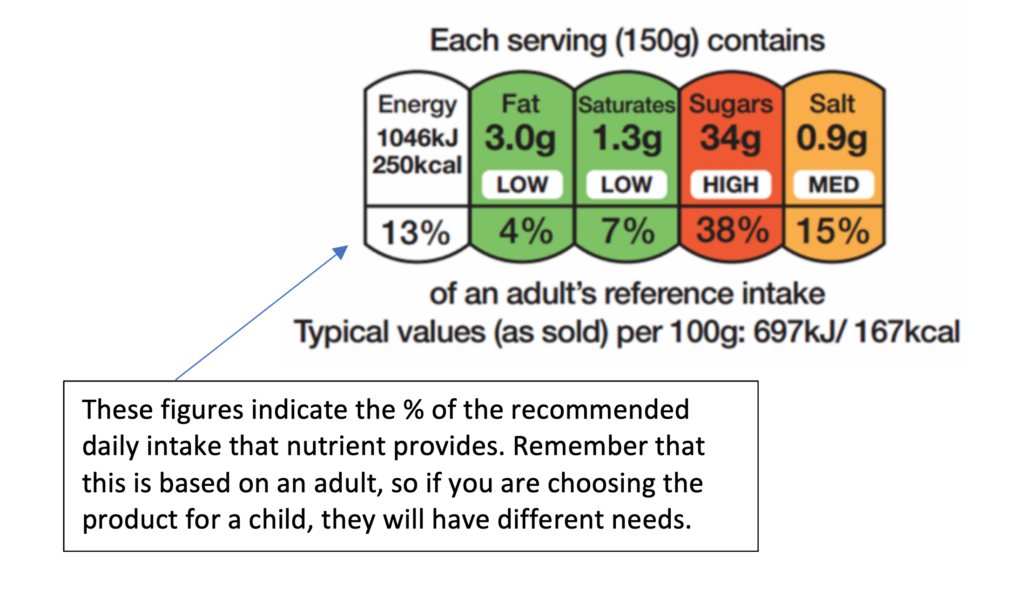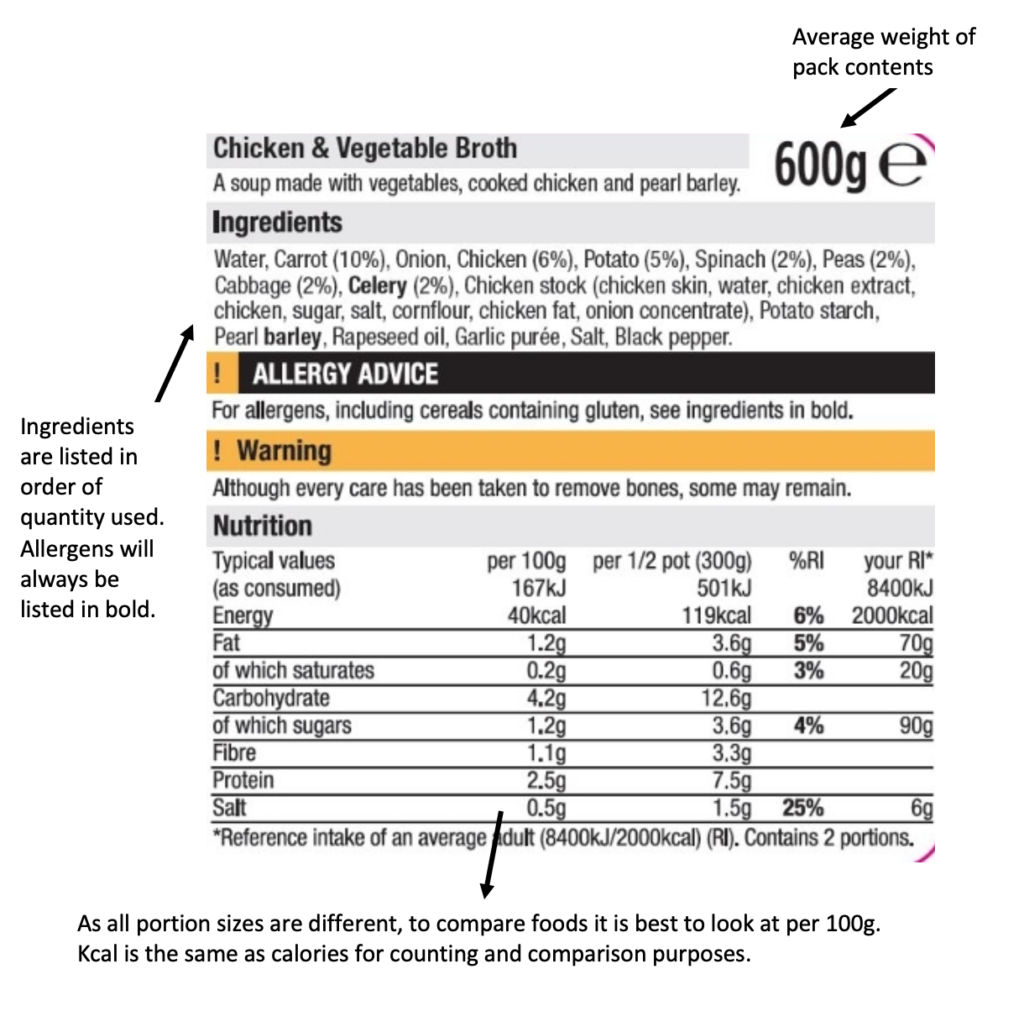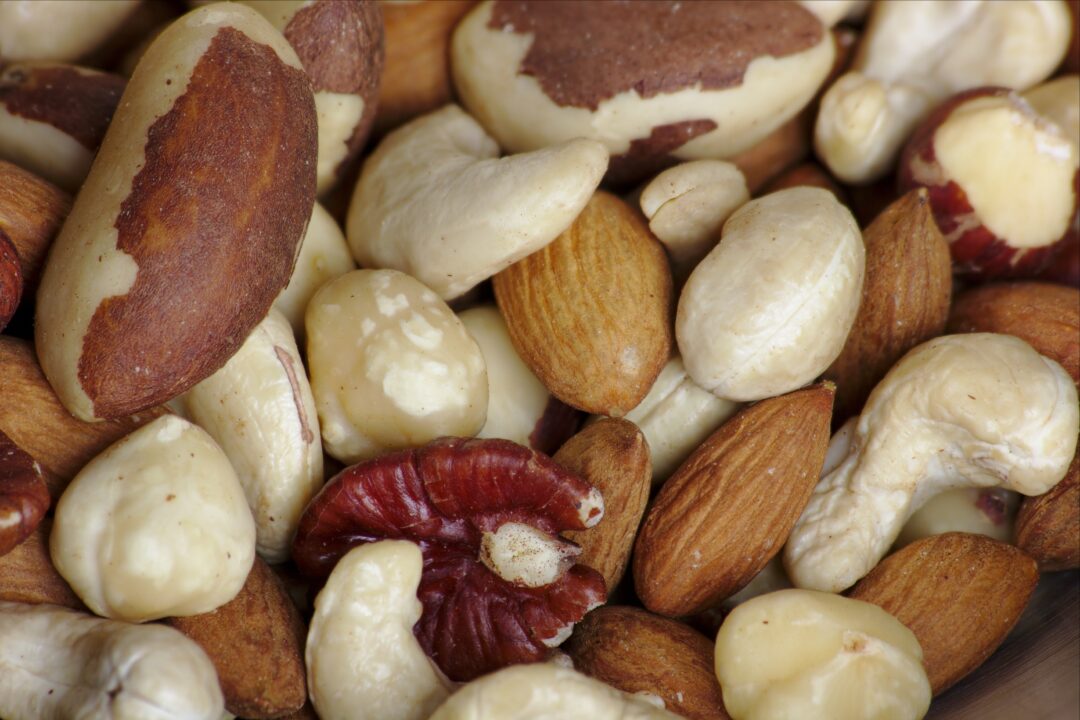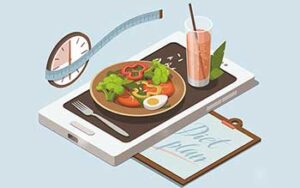Learn how to understand nutrition labels so that you do not sabotage your diet plan. Understand the portion sizes, use-by dates and your recommended daily intake.
- Understanding the portion size
- Reference intake relation to the nutritional profile of the product
- How to read the ingredient declaration
- The importance of traceability and environmental impact
- The difference between use by and best before dates
Labelling regulations have been introduced to make sure that food retailers and manufacturers make nutrition labels as easy as possible for the general public to understand. However, because it is not always in a food producers’ best interest to highlight that their food is high in salt, fat or sugar for instance. There are plenty of tricks they can employ to avoid broadcasting the downside of their product.
The nutrition labels themselves
To be clear the front of pack nutrition label and back of pack nutrition label are from different products.
Example of traffic light nutrition label (front of pack)
- This nutrition label is normally found on the front of the packaging. The three colours indicate how much of the nutrient is present in the food.
Red– high in the nutrient. Avoid foods with lots of red labels or eat them less often.
Amber– medium quantities of the nutrient. You can eat this most of the time but be conscious that this will add up.
Green– low in the nutrient. The green traffic light indicates a healthier product.

Example of a back of pack nutrition label

Tips to make sure you don’t fall into any traps when looking at nutrition labels
- Remember to check the portion size
The nutrition displayed on the front and back of the packet is either for 1 portion of the product or per 100g of the product.
Now you are probably all familiar with the idea that a portion of biscuits is normally considered 1 and a half or 2 biscuits. Yet we are often fooled because something appears to be in a one portion packet. When in fact the ‘recommended portion’ may only be half of that packet. So, our advice to avoid getting caught out by this is making sure you check the overall weight of the product on the nutrition label and then double what the portion size is.
- The reference intake
As mentioned in the previous point retailers and manufacturers have provided the nutritional information and often add to this what percentage of your daily reference intake this is. The reference daily intake is the level of a nutrient sufficient to meet the requirements of 98% of the population. They are not targets but guidelines. Although these will be a good guide for adults, children have different requirements, for example less sugar, fat and salt. So make sure you are aware of your nutritional needs and roughly how much you should be consuming to maintain a healthy balanced diet.
You can find out about how to maintain a healthy balanced diet through the information provided in our nutrition 101 pages. Or you can follow our suggested healthy diet plan.
- Always read the ingredient declaration
By law, every food product sold must have a list of all the ingredients on the back of the packet, or at least available for the customer to ask for. Sometimes there are lots of different names for the same ingredient. If you are trying to avoid certain ingredients, make sure to search the internet and note all the various names by which this may be described.
An example is palm oil. It is unlikely that you would see palm oil listed on the packaging because retailers know that lots of the general population would avoid picking up this product from the shelves. In fact, according to one orangutan charity, there are over 200 alternative names for palm oil. Some examples are palm fruit oil, palm kernel oil, distilled monoglyceride palm, hexadecylic…. the list goes on.
- Traceability
Lots of us are becoming more aware of where are food is grown and shipped in from. This may be because of being aware of your carbon footprint and so trying to keep your food miles down, or this could be for ethical reasons.
Make sure that you look at both where the food was produced and where it was packaged. There have been stories of food being produced in country A, then shipped to country B for packaging, then shipped back to country A to be sold. However, this comes at a price to the environment.
- The difference between use by and best before dates
Use by dates are all about safety and best before dates are all about quality. It is important to understand the difference between the two because ignoring a use by date can cause illness. For example, if raw chicken goes past the use by date there is the risk that some harmful bacteria may have multiplied, and this could lead to serious health problems. On the other hand, the best before date means it’s safe to eat although the quality may be somewhat compromised. For example, if your bread is past it’s best before, it will be safe to eat but may be a little dry.
Conclusion
To conclude nutrition labels will provide you with all the information you need, but they aren’t always easy to read at first! So it’s important to invest the time to learn how to understand nutrition labels correctly.



